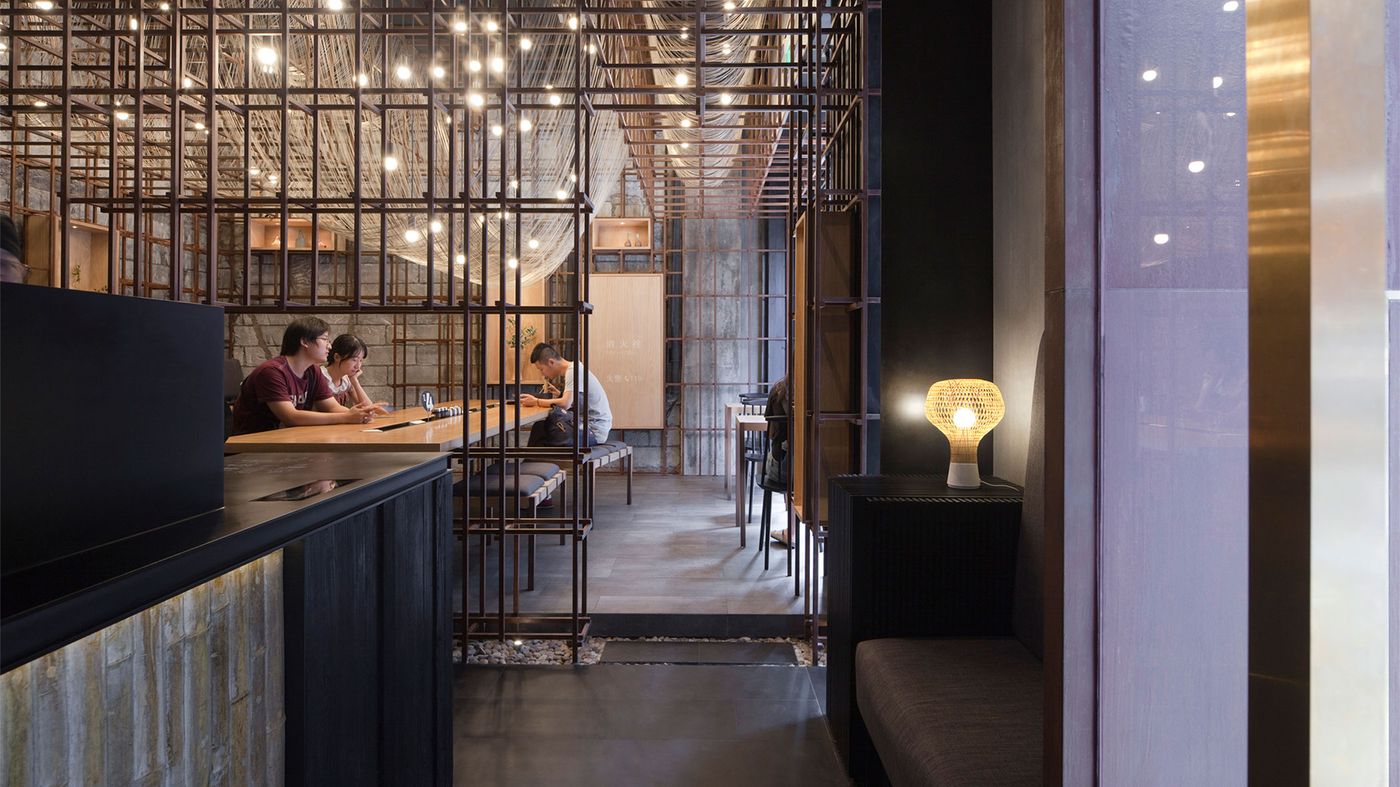
The Noodle Rack: New-Age Dining, Under the Poetic Light of Tradition
Words by Eleni Papaioannou
Location
Wanda Plaza Zhongshan Road 589, Changsha, China
The Noodle Rack: New-Age Dining, Under the Poetic Light of Tradition
Words by Eleni Papaioannou
Wanda Plaza Zhongshan Road 589, Changsha, China
Wanda Plaza Zhongshan Road 589, Changsha, China
Location
July 2015 saw the completion of a new noodle venue in Changsha, a major city in south-central China, aiming to prove that traditional eateries can be treated as hip gathering spots, comparable to trendy cafés. Setting itself apart from the stigma of the kitsch “hole in the wall” joints found on every street in the country, The Noodle Rack is a new player where architect Christina Luk and her team have successfully created a crossover between fast food chain and upscale diner. Engaging in the duality between rough and refined, the result is a western look on eastern tradition. In order to conceive a strong identity for this, the first restaurant of a chain to be expanded across China, the studio integrated the tradition of noodle making in its design, by ingeniously recreating an oversized noodle rack for the The Noodle Rack’s centrepiece.
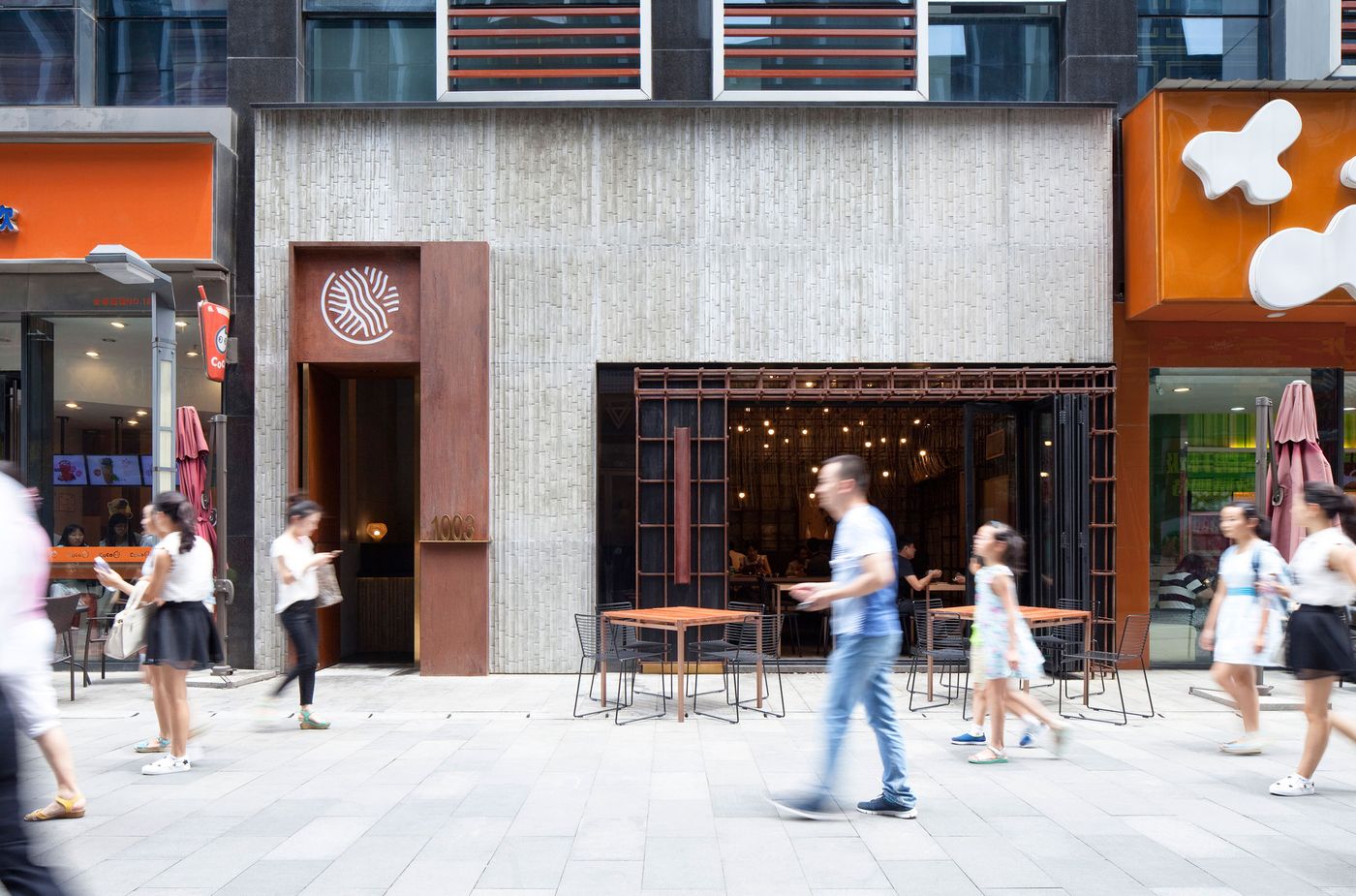
Photo by Peter Dixie for LOTAN Architectural Photography.
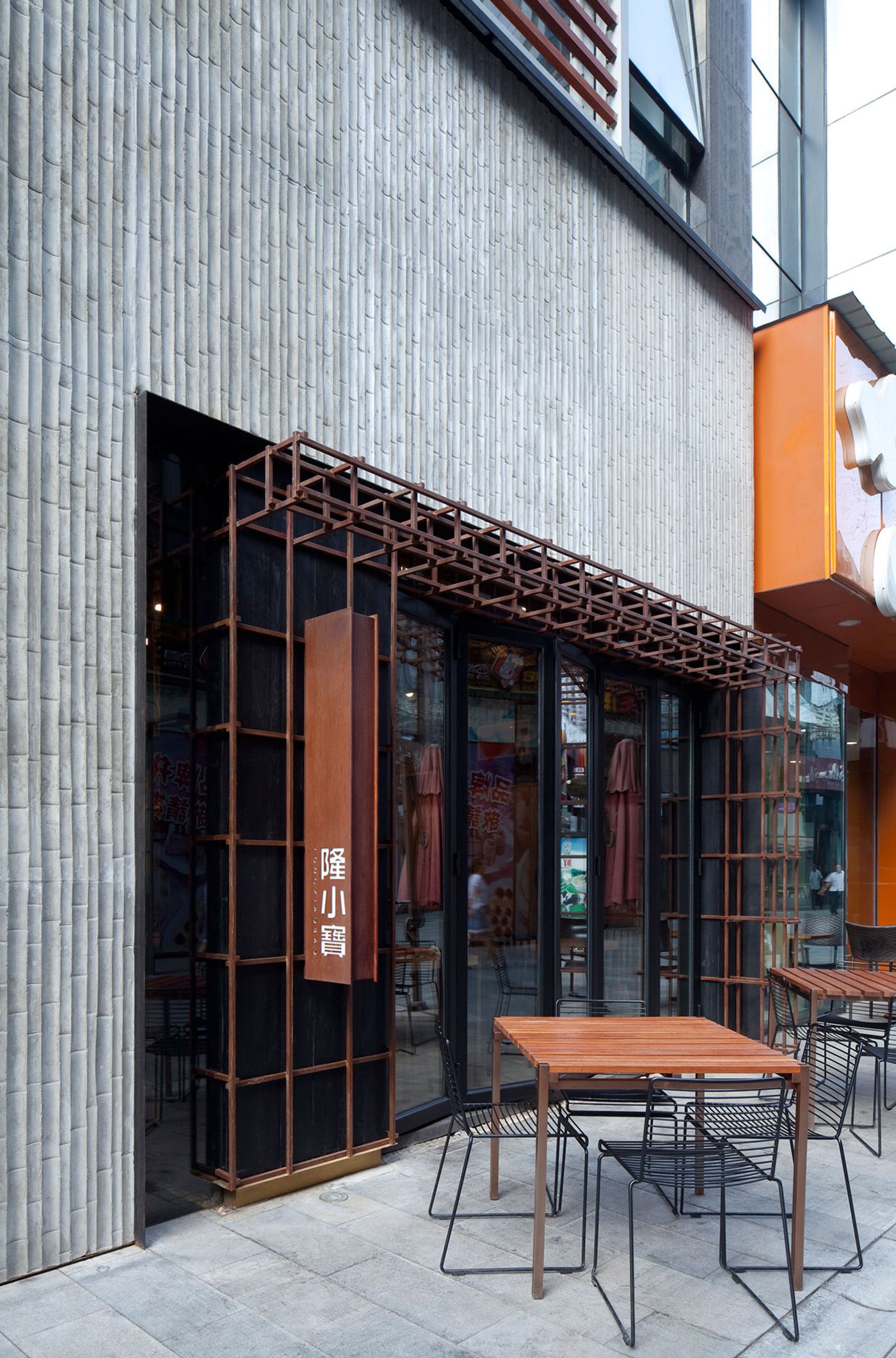
Photo by Peter Dixie for LOTAN Architectural Photography.
Located on an outdoor shopping promenade near the Xiangjiang River, the 50-sqm space that previously hosted a candy store, now exudes a calm yet mysterious presence with its chicly lit, bamboo-cast storefront. “It was a pre-cast process” says Christina. “We worked closely with our contractor to determine the size of the concrete panels and the width of the bamboo strips. Then, he made a mould that was lined with bamboo. After inserting steel mesh for reinforcement, we poured in the concrete mix and kept the formwork in place with ties until the panel was cured.”
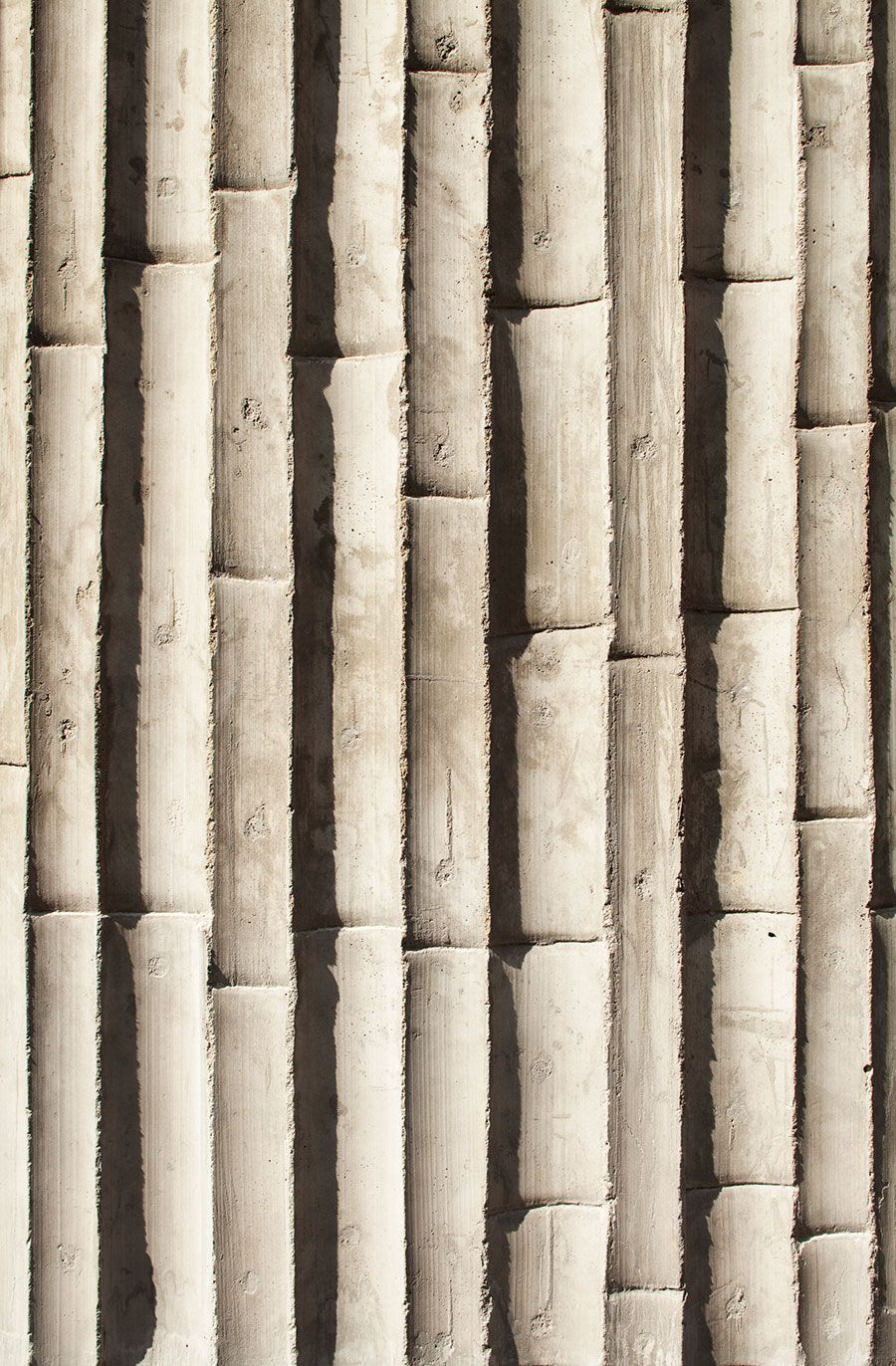
Photo by Peter Dixie for LOTAN Architectural Photography.
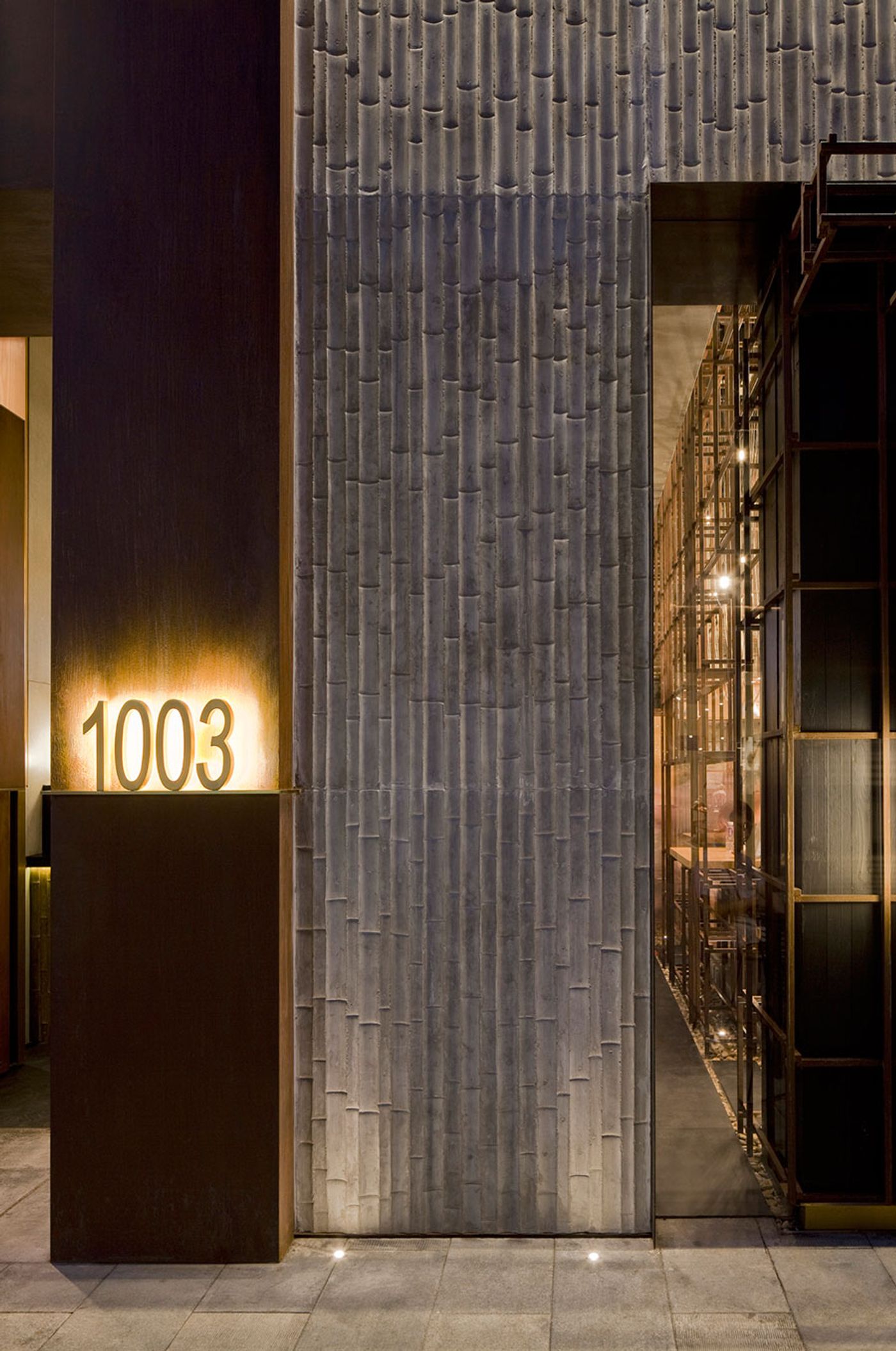
Photo by Peter Dixie for LOTAN Architectural Photography.
Walking in, the bamboo formation can also be seen on the store’s counter that has been lined with the same mould used for the storefront. Patrons are then invited to dine in a somewhat open space with a very high ceiling, surrounded by a grid construction; this metal matrix opens up here and there to make room for plain wooden boxes that are here to carry a piece of history, showcasing selected porcelains.
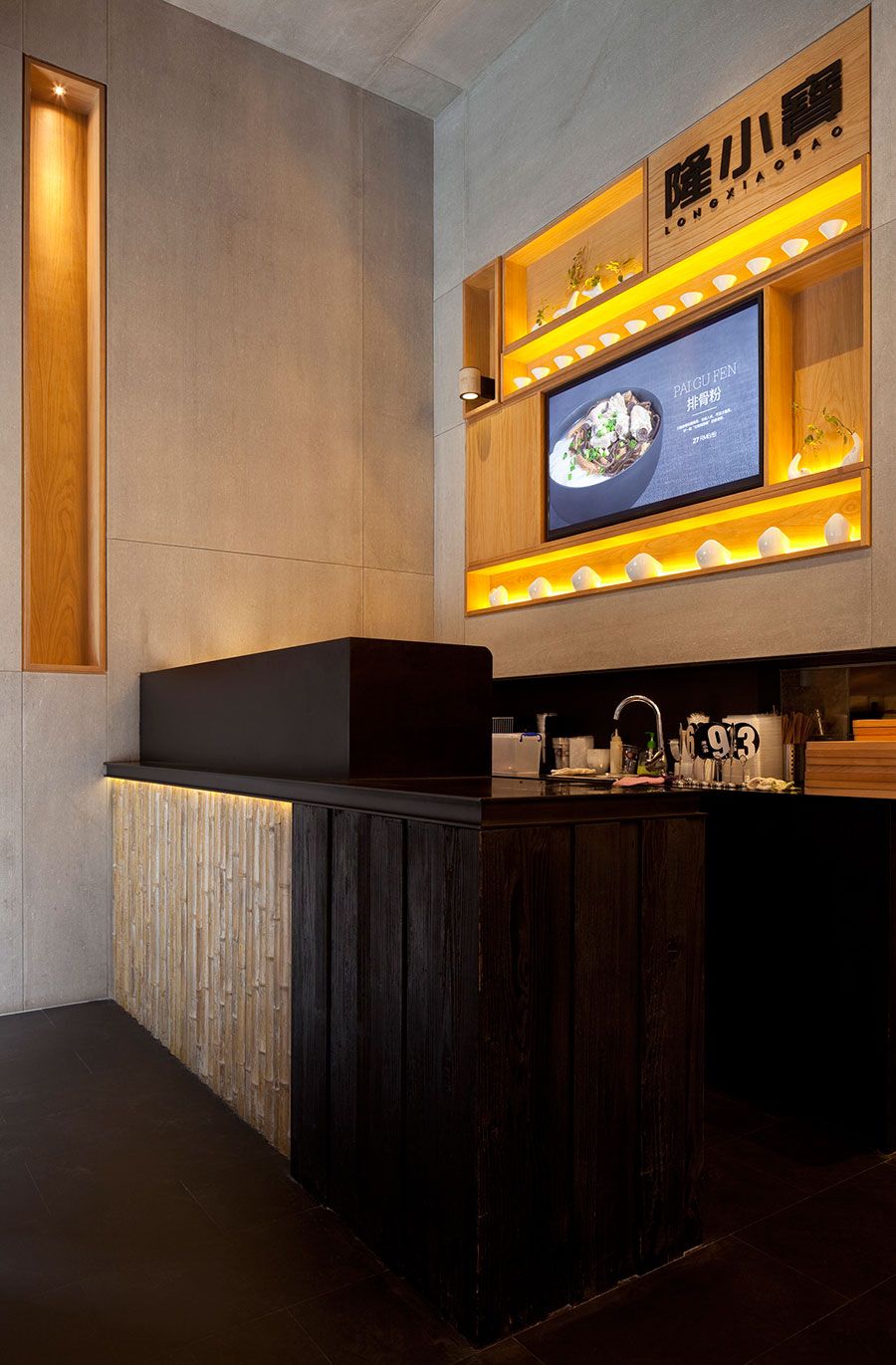
Photo by Peter Dixie for LOTAN Architectural Photography.

Photo by Peter Dixie for LOTAN Architectural Photography.

Photo by Peter Dixie for LOTAN Architectural Photography.
The key feature of this project however, is none other than the cleverly placed series of metal wires, draped across the dining room to create the poetic notion of an old school noodle rack. Assisted by strategically located lightning bulbs, the wires become reflective strands that are a real experience to dine under. “The idea was inspired from the nature of the noodle restaurant and the given high ceiling of the site” admits Christina. “Growing up in a city like Hong Kong, I did not have noodle racks in my surroundings at all; the freshest noodles I came across would be the hand-pulled noodle performance in a restaurant. But when I was travelling in rural China, I did see a lot of households drying different kinds of food in front of their porch.” As Christina explains, this was a touch of tradition that she carefully elaborated on: “The idea came with my very first hand sketch of a dining table under hanging noodles. As the project evolved, we tried to develop a spatial narrative and refined this noodle idea into a lighting feature.” As for Christina’s favourite spot? “The dining area is not big, so you can pretty much enjoy the feature from all angles. But the best place to see the volume of this noodle feature would be at the central table, towards the entry.”

Photo by Peter Dixie for LOTAN Architectural Photography.
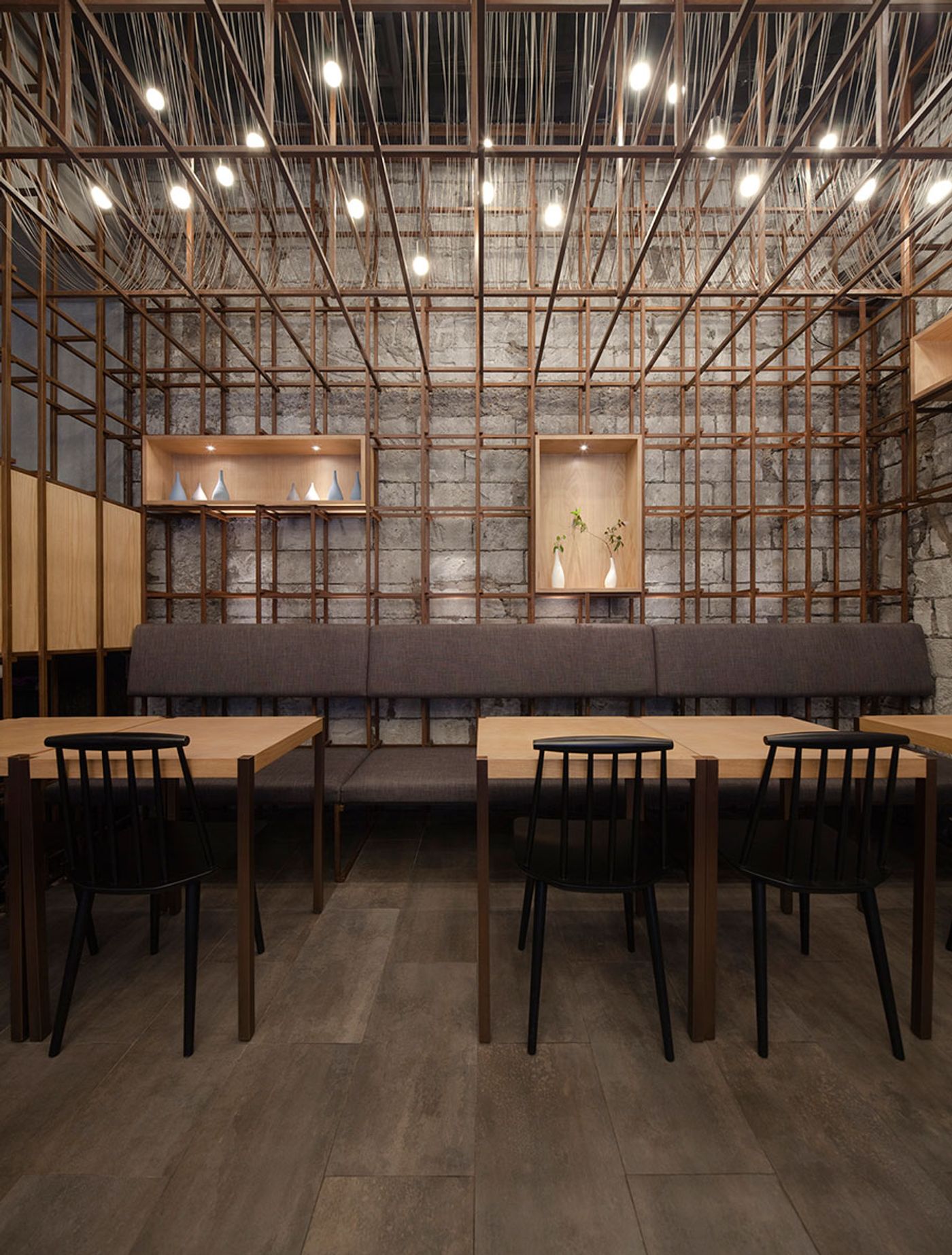
Photo by Peter Dixie for LOTAN Architectural Photography.
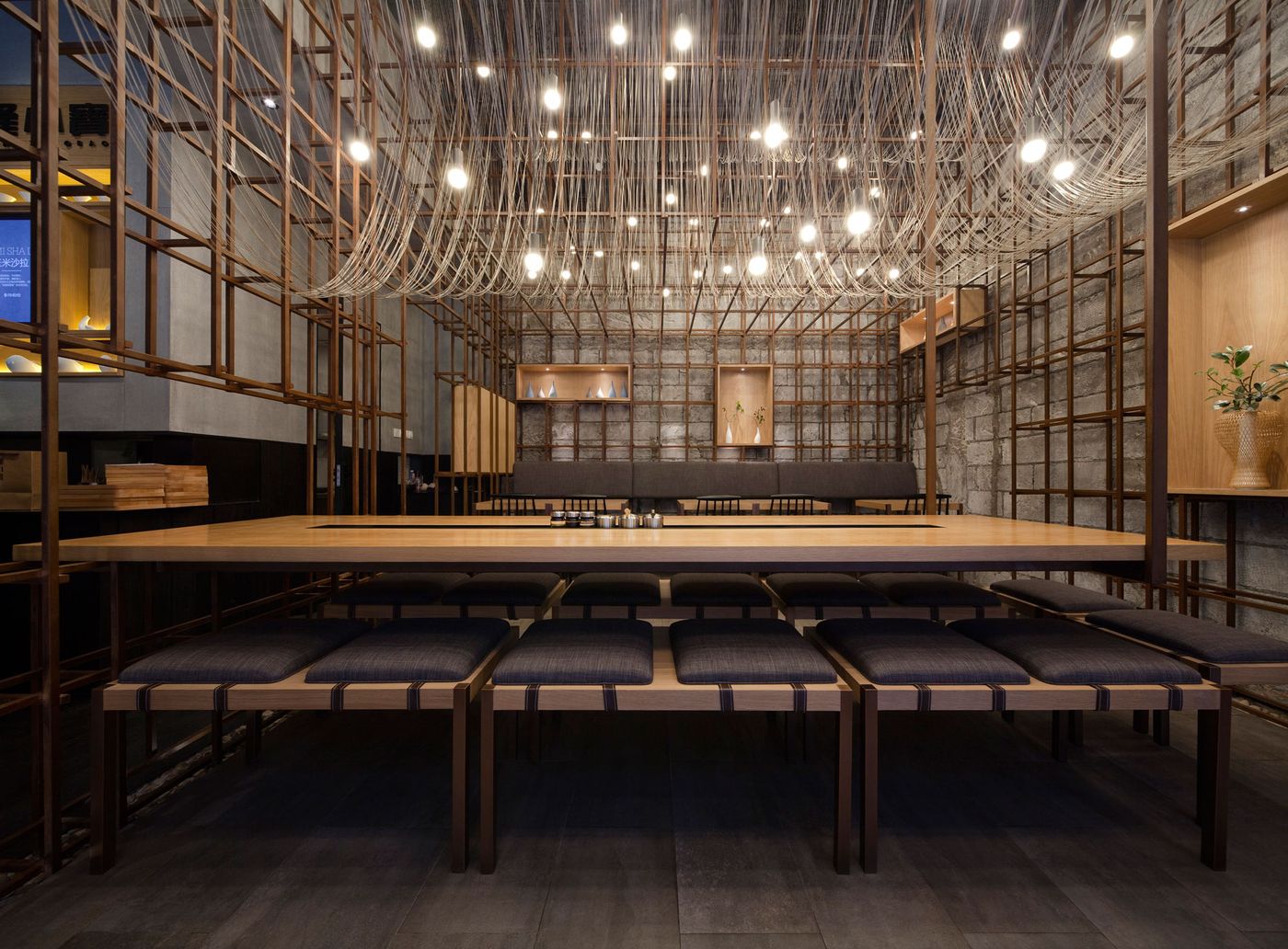
Photo by Peter Dixie for LOTAN Architectural Photography.

Photo by Peter Dixie for LOTAN Architectural Photography.
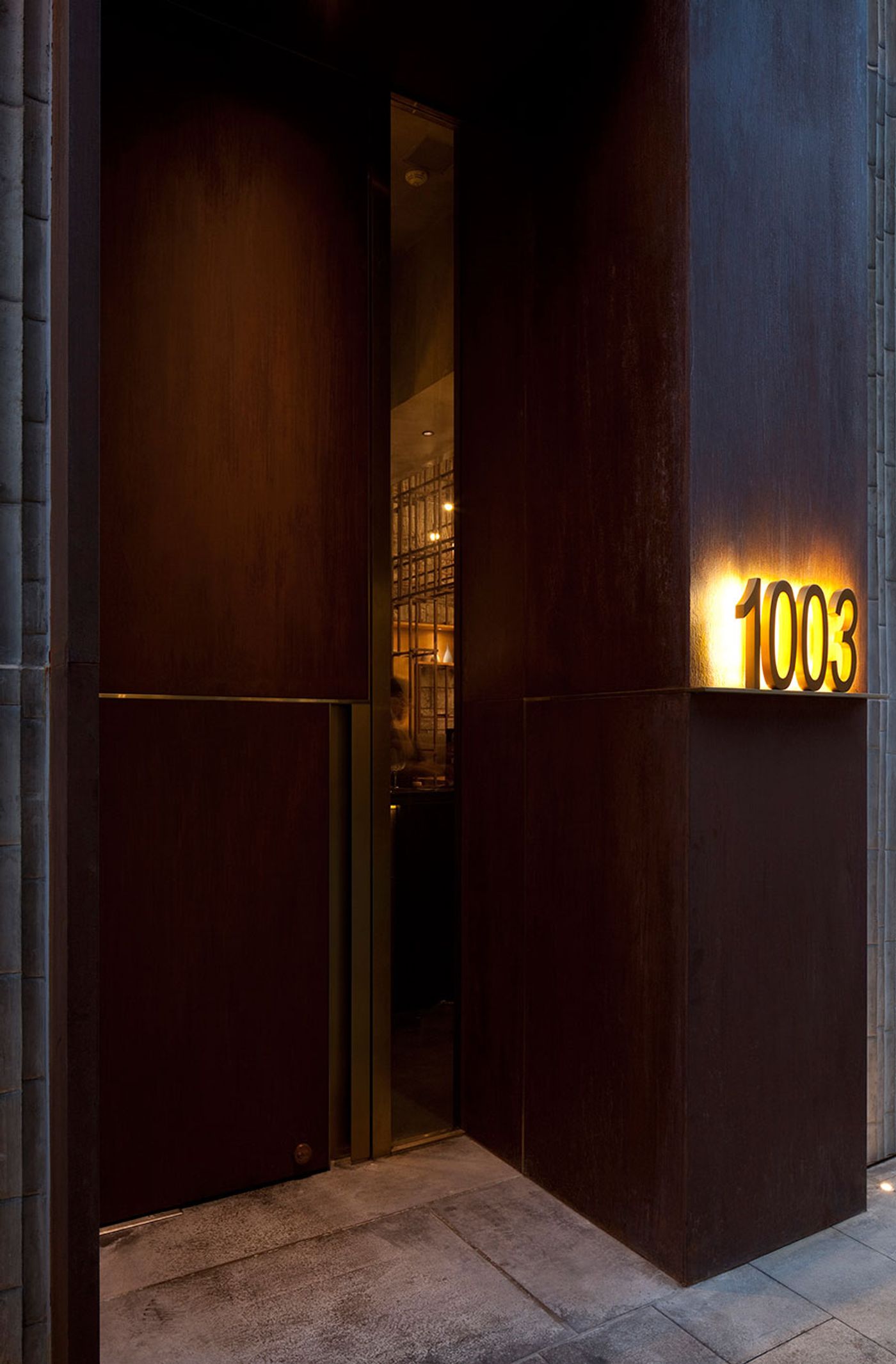
Photo by Peter Dixie for LOTAN Architectural Photography.
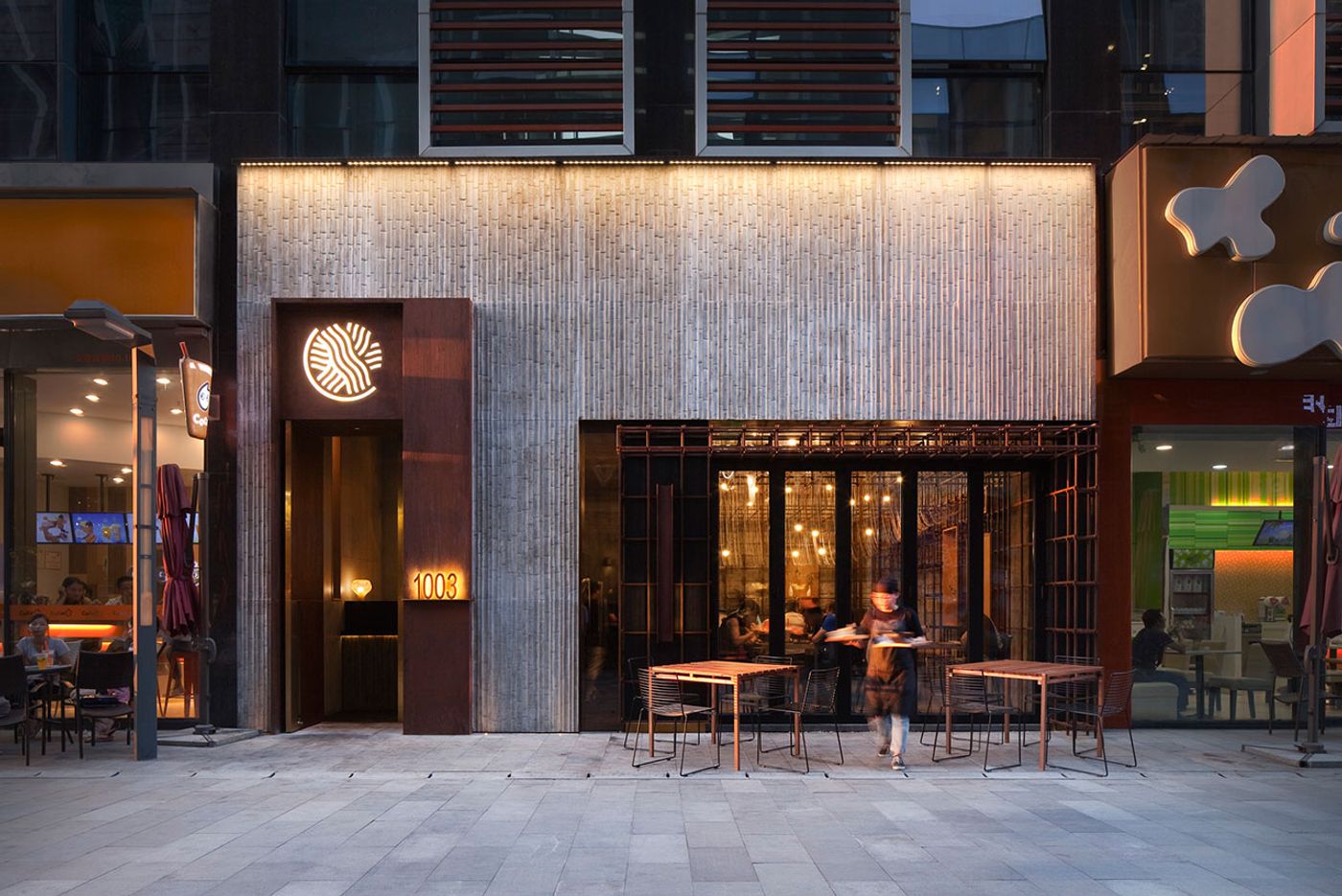
Photo by Peter Dixie for LOTAN Architectural Photography.